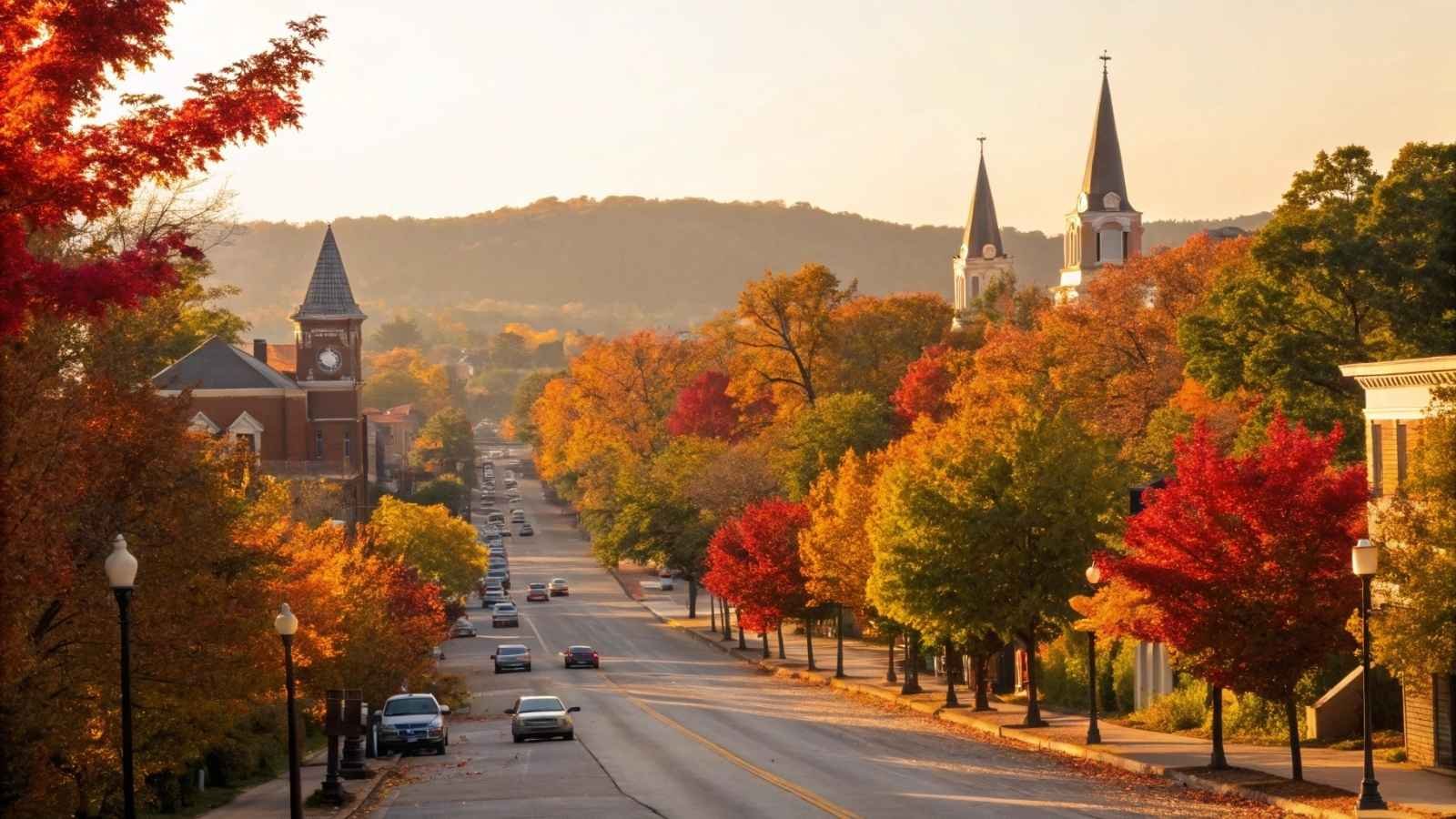
What if your retirement wasn’t about cutting back, but expanding? More mornings with mountain air in your lungs, more savings left in your account, and healthcare that doesn’t make you think twice.
These places are not fictional fantasies, they are real towns where your money stretches farther and the lifestyle is richer. Tucked away in the best high-altitude towns with big views and little cost, they deliver affordability, but also dignity, vitality, and peace of mind.
Whether you crave quiet trails, vibrant arts, or just a stronger sense of enough, you’ll want to explore every one of these towns before choosing your next chapter.
1. Maryville, Tennessee
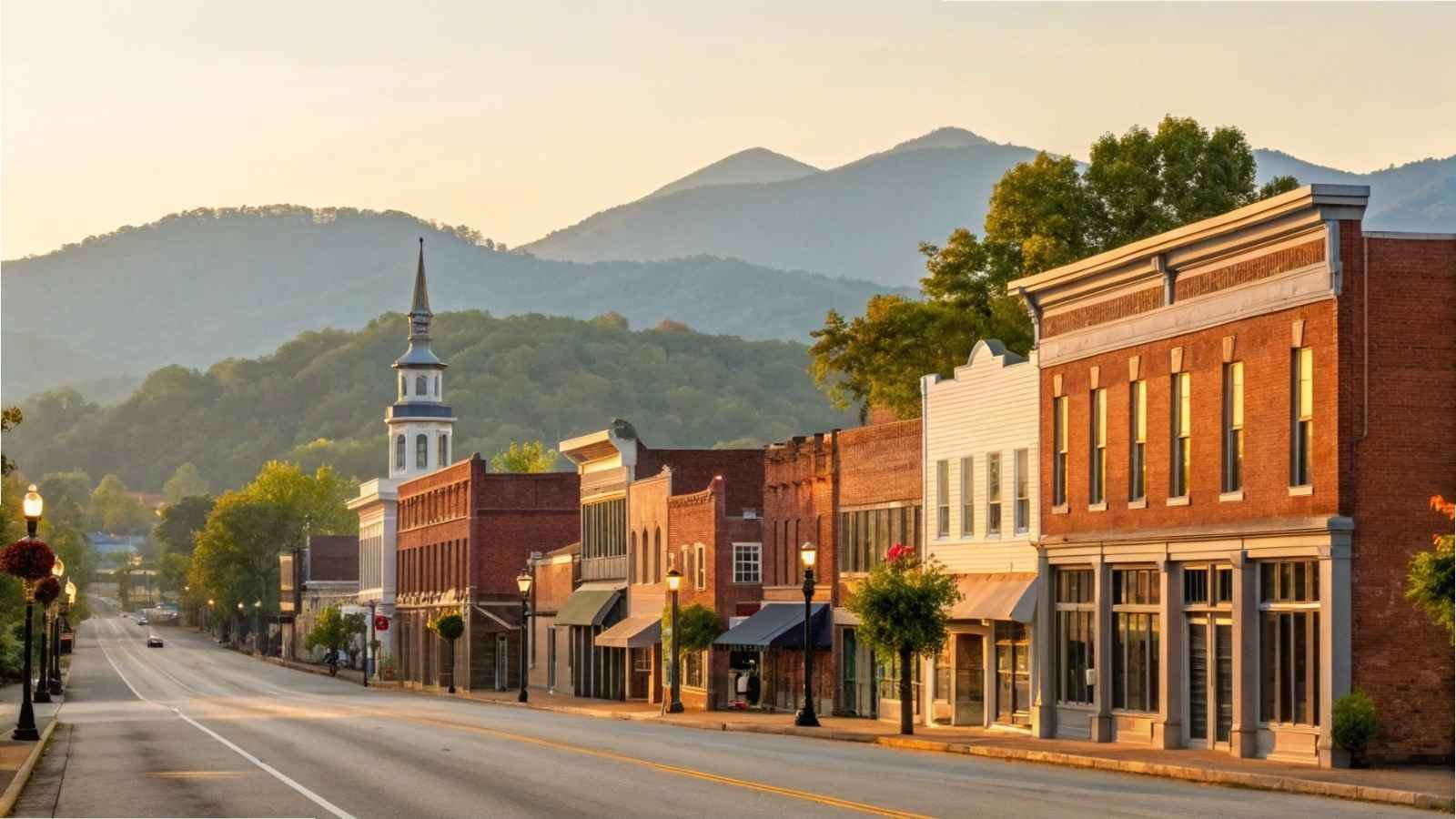
Located in the foothills of the Great Smoky Mountains, Maryville is the perfect mountain retreat for retirees (no tourist town living on every $200/hour wage) and is one of those inner circle gems located between a costly mountain place and an over-touristed mountain town (Knoxville, anyone?). While the city of Knoxville (with well-rated hospitals like UT Medical Center) is less than 30 minutes away, Maryville is small-town at its best with tree-lined streets, diner locals, and roughneck neighbors who still wave from their porches.
What makes Maryville stand out is its balance of affordability and access. Housing prices remain well below the national average, yet you’re within arm’s reach of cultural offerings, medical care, and stunning trails. You can have the best of both worlds: fish in the Little River in the morning, see a cardiologist in the afternoon.
And if you like mild seasons, you’ll enjoy this: winters are short and manageable, and fall is a spectacular display of color. It’s a town that feels like you’ve stepped back into a simpler time, without giving up your Medicare Advantage network.
Quick Facts:
- Best Months to Visit: September–November (for fall colors) and April–June (for mild spring weather)
- Average Home Price: ~$295,000
- State Taxes: No state income tax in Tennessee
- Nearest Major Hospital: Blount Memorial Hospital + UT Medical Center (Knoxville)
- Vibe: Quiet, suburban, friendly, and close to outdoor action
2. Tryon, North Carolina

Tryon might be one of North Carolina’s best-kept secrets. Tucked into the Blue Ridge foothills, this artsy, equestrian town has long been a quiet retreat for writers, painters, and retirees looking to stretch their savings. You’ll find mild weather, an active arts scene, and access to highly rated hospitals in nearby Asheville and Spartanburg.
It’s small—just a few thousand people—but packed with charm. The town has its own film festival, a historic movie theater, and enough art galleries to keep your weekends full. But the best part? Living in Tryon costs nearly 30% less than in Asheville, which makes it a financially smart alternative for retirees who want mountain living with lower bills.
Tryon also has a surprising number of wellness options for a town its size, from yoga studios to integrative clinics. It’s a place where health and lifestyle go hand in hand, and community ties are strong—great for people who want to age in place with support around them.
Quick Facts:
- Best Months to Visit: March–May and September–October
- Average Home Price: ~$260,000
- Healthcare Nearby: St. Luke’s Hospital in town; major care in Asheville (AdventHealth, Mission Health)
- State Taxes: Moderate income tax; Social Security is not taxed
- Vibe: Artsy, relaxed, equestrian-friendly, and deeply local
3. Casper, Wyoming
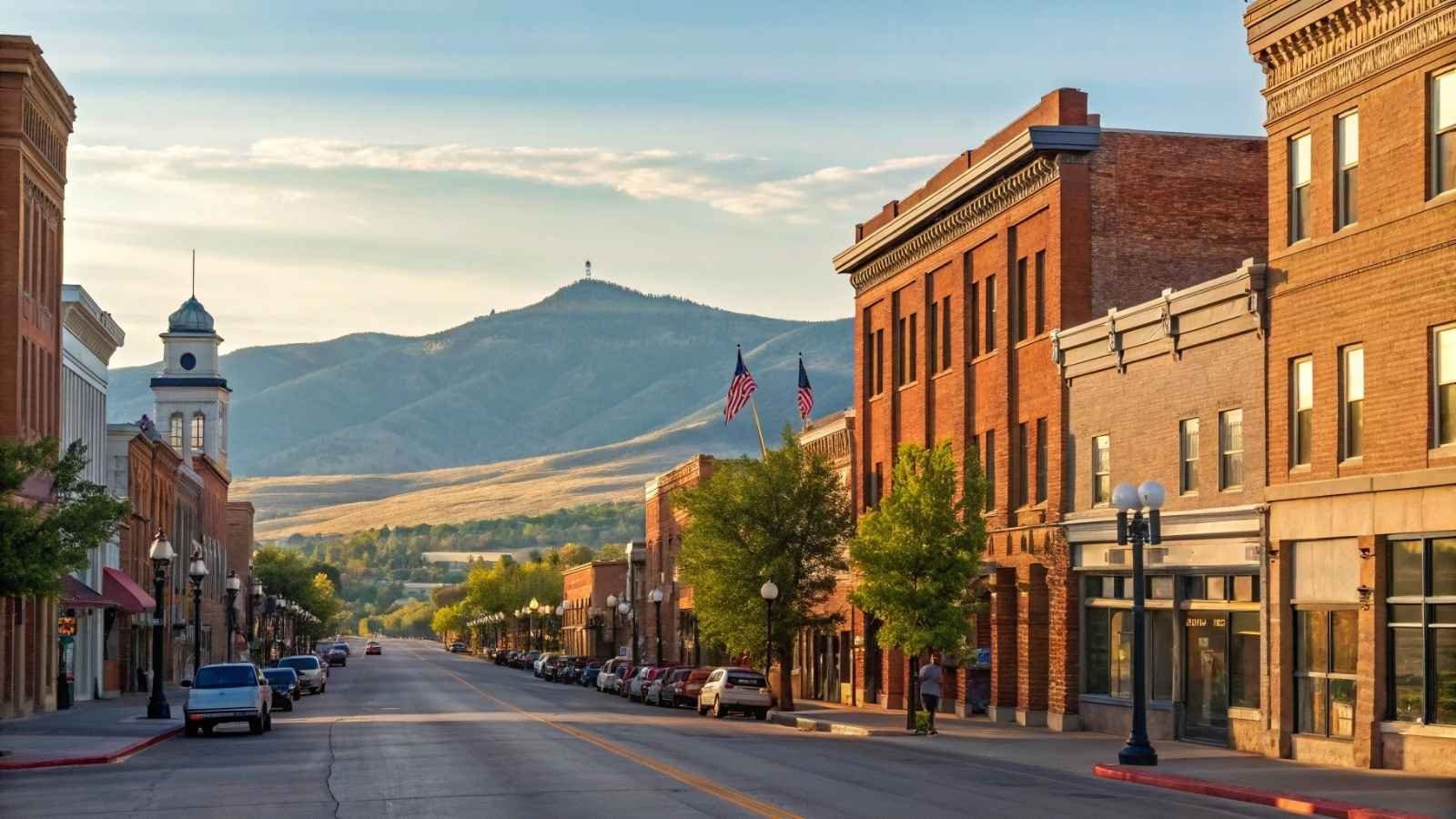
Casper may be the mountain town for you if you love wide-open spaces and a slower pace (aside from all of the awesome wide-open spaces). With a location along the North Platte River and nestled between mountain ridges, this town offers you all four seasons — and the freedom to live it all on a more minuscule budget. Wyoming does not have an income tax, and living costs in general are a lot lower than living in most of the other Rocky Mountain states.
Casper also punches above its weight in healthcare. Banner Health’s Wyoming Medical Center is a regional hub that draws patients from all over the state. And while Casper’s population hovers around 60,000, it feels much more intimate, especially if you’re into fishing, hiking, or snowshoeing.
Another plus? It’s easy to buy land here. Retirees looking for a bit more privacy or even a hobby farm can do so without breaking the bank. It’s the kind of place where you can see the Milky Way at night and still have a hospital 10 minutes away.
Quick Facts:
- Best Months to Visit: June–September (warmer weather) and December (if you like snow)
- Average Home Price: ~$275,000
- Healthcare Access: Wyoming Medical Center (Banner Health)
- State Taxes: No state income tax
- Vibe: Independent, outdoorsy, with Old West grit
4. Butte, Montana
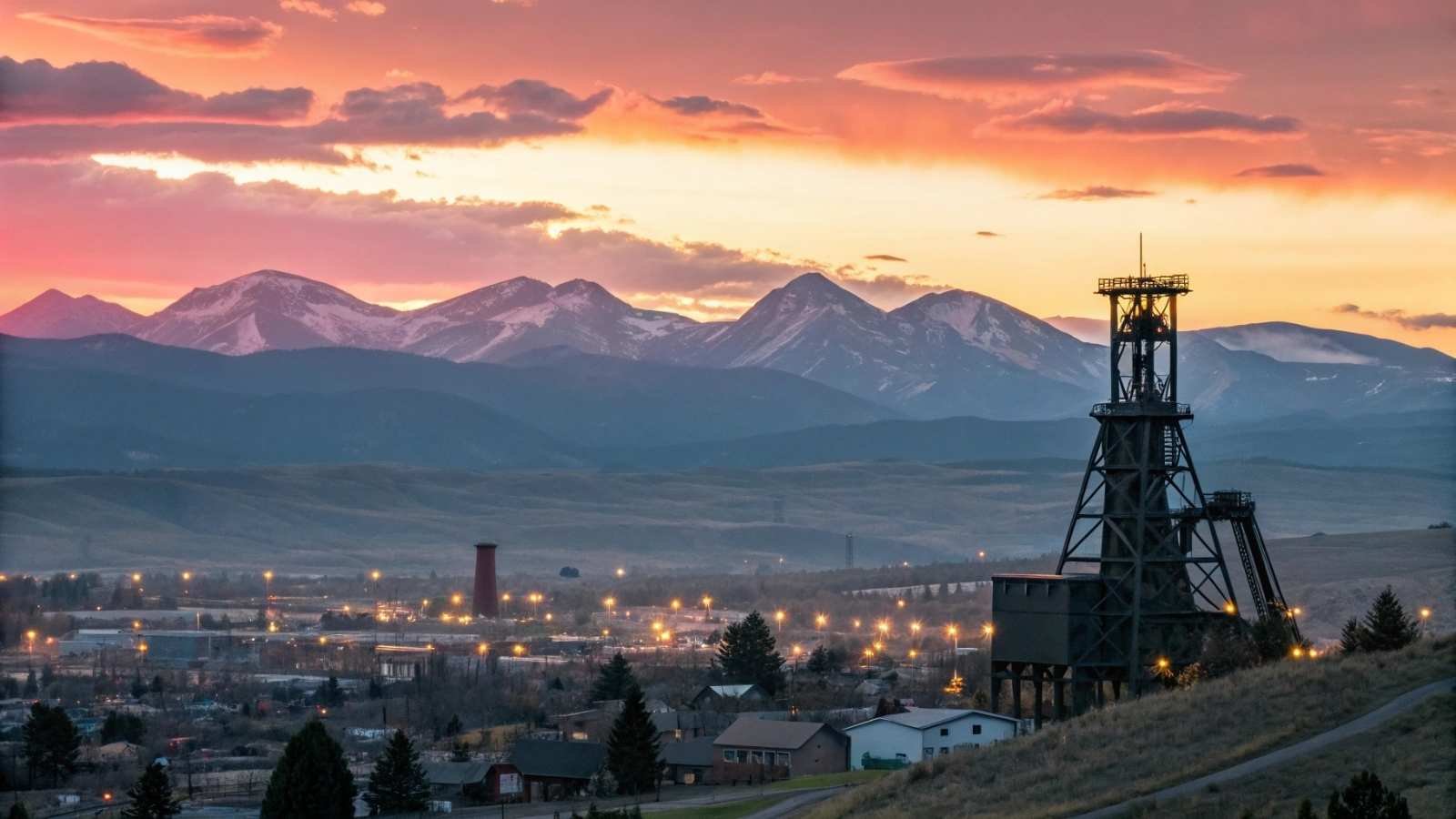
From a prosperous mining town, Butte is now a serene, affordable mountain city with rich historical heritage, and one of the suburban areas with & major healthcare network. Butte is a gem of the west with a mountain backdrop, the Continental Divide, and a fraction of the cost of living as any other mountain town, so that Butte offers unimaginable value, mostly to retirees.
The healthcare here is a standout for a town of its size. St. James Healthcare (a part of Intermountain Health) provides comprehensive services, and you’re just a couple of hours from larger facilities in Bozeman and Missoula if needed. You’ll also find a VA Medical Clinic here, which is a huge plus for veteran retirees.
Butte’s historic Uptown area is lined with brick buildings and old miner homes—some now restored into cozy residences. You can dine in a century-old saloon one day, and take a mountain drive the next. It’s quirky, proud, and surprisingly affordable.
Quick Facts:
- Best Months to Visit: June–September for warmth and October for fall colors
- Average Home Price: ~$245,000
- Healthcare Access: St. James Healthcare; VA Clinic
- State Taxes: Moderate income tax; partial exemption on Social Security
- Vibe: Gritty charm, historic, blue-collar meets mountain cool
5. Hickory, North Carolina

This city, located in the foothills of the Blue Ridge Mountains, offers significant appeal, particularly for retirees. It presents a blend of urban amenities and a cost of living more aligned with smaller towns. The city’s medical facilities are extensive, comparable to those found in larger metropolitan areas. Its downtown area has undergone recent development, now featuring a diverse range of establishments, including farm-to-table restaurants and a growing arts district.
Healthcare is a big reason why people come here. HealthcareNowCatawba Valley Medical Center and Frye Regional Medical Center-local but not the only hospitals, offer world-class services in areas including heart care and orthopedics. When you add in that low-cost housing market, it’s pretty clear the first best places to retire in the U.S., and it’s on many best lists…
Wellness and Recreation are also taken very seriously. You can be active for free in Hickory—from lakefront walks to biking clubs, to free community fitness for all (every day)/every week)/etc, depending on your need. A town that is practically made for retirees seeking energy and engagement, not disconnection.
Quick Facts:
- Best Months to Visit: April–June and September–November
- Average Home Price: ~$260,000
- Healthcare Access: Catawba Valley Medical Center; Frye Regional
- State Taxes: Moderate income tax; Social Security not taxed
- Vibe: Active, welcoming, and full of community life
6. Twin Falls, Idaho

Situated at the Snake River Canyon with views every national park will be envious of, Twin Falls is quite possibly my favorite overlooked retirement destination in Idaho for someone who wants beauty but not the price tag that typically comes with Boise. It basks in the waterfalls (the huge Shoshone Falls is higher than Niagara), and downtown is experiencing an artful rebirth with cafes, breweries all in the open-air markets.
Beyond its good looks, Twin Falls delivers excellent healthcare. St. Luke’s Magic Valley Medical Center is a full-service hospital that offers advanced care, yet the cost of living remains well below the national average. That’s a rare combo—gorgeous views, strong healthcare, and a low cost of living.
The outdoorsy lifestyle is real here. You’ll find retirees golfing in the morning, hiking canyon trails in the afternoon, and catching live music at night. If you’re after natural drama and budget calm, this one’s a keeper.
Quick Facts:
- Best Months to Visit: May–October
- Average Home Price: ~$310,000
- Healthcare Access: St. Luke’s Magic Valley Medical Center
- State Taxes: Moderate; Social Security is taxed
- Vibe: Rugged, scenic, low-key, with a growing arts-and-dining scene
7. Fayetteville, Arkansas

Once a college town flying under the radar, Fayetteville has blossomed into one of the South’s most livable mountain towns, with the Ozark Mountains as your backyard. It’s culturally rich, surrounded by parks, and offers a cost of living that feels like it’s still in the early 2000s.
Healthcare is top-notch, with Washington Regional Medical Center and Veterans Health Care System of the Ozarks serving the region. Plus, with the University of Arkansas anchoring the town, you get access to concerts, lectures, and sporting events for free or at low cost—all within a retiree-friendly budget.
And Fayetteville’s a town that knows how to live well without pretension. From weekly farmer’s markets to bike trails that stretch to Bentonville, it’s a surprisingly forward-thinking town that still says “hey” when you walk down the street.
Quick Facts:
- Best Months to Visit: April–June, September–October
- Average Home Price: ~$285,000
- Healthcare Access: Washington Regional Medical Center; VA Health System
- State Taxes: Moderate income tax; Social Security not taxed
- Vibe: Youthful, progressive, mountain-chic on a budget
8. Pomeroy, Washington

Now this one’s off the beaten path. Pomeroy sits in southeastern Washington, where the mountains meet the wheat fields—a perfect setting if you want space, silence, and star-filled skies. It’s not flashy, but it has a charm that makes you slow down, breathe deeper, and spend less.
Healthcare? Surprisingly solid. Garfield County Hospital District provides accessible care, and for specialized needs, you’re within driving distance of Tri-Cities and Spokane, which host full-service medical centers. Combine that with some of the lowest property prices in the Northwest, and Pomeroy becomes a quiet retirement win.
There’s also a strong sense of community here. Locals know your name, and the seasonal farmers’ market is more about relationships than produce. If your idea of retirement includes porch sunsets and open land, this one might be your speed.
Quick Facts:
- Best Months to Visit: May–September
- Average Home Price: ~$185,000
- Healthcare Access: Garfield County Hospital; larger care in Tri-Cities
- State Taxes: No income tax in Washington
- Vibe: Slow, rustic, deeply local, big-sky quietude
9. Carson City, Nevada

Carson City is the rare state capital that still feels like a mountain town, especially with the Sierra Nevada rising just west and Lake Tahoe just up the road. With a dry climate, mild winters, and four-season beauty, it’s easy to see why retirees are flocking here.
Here’s what makes it smart: Nevada has no income tax, and Carson City offers access to top-notch healthcare through Carson Tahoe Regional Medical Center. It’s also just 30 minutes from major medical specialists in Reno, giving you options that few mountain towns of this size can match.
And there’s culture, too—museums, concerts, craft fairs, and even an old-school railroad. You get history, nature, and financial breathing room all in one place.
Quick Facts:
- Best Months to Visit: May–June, September–October
- Average Home Price: ~$395,000
- Healthcare Access: Carson Tahoe Regional, major care in Reno
- State Taxes: No income tax
- Vibe: Historic, dry-climate, well-connected to nature and services
10. Lander, Wyoming
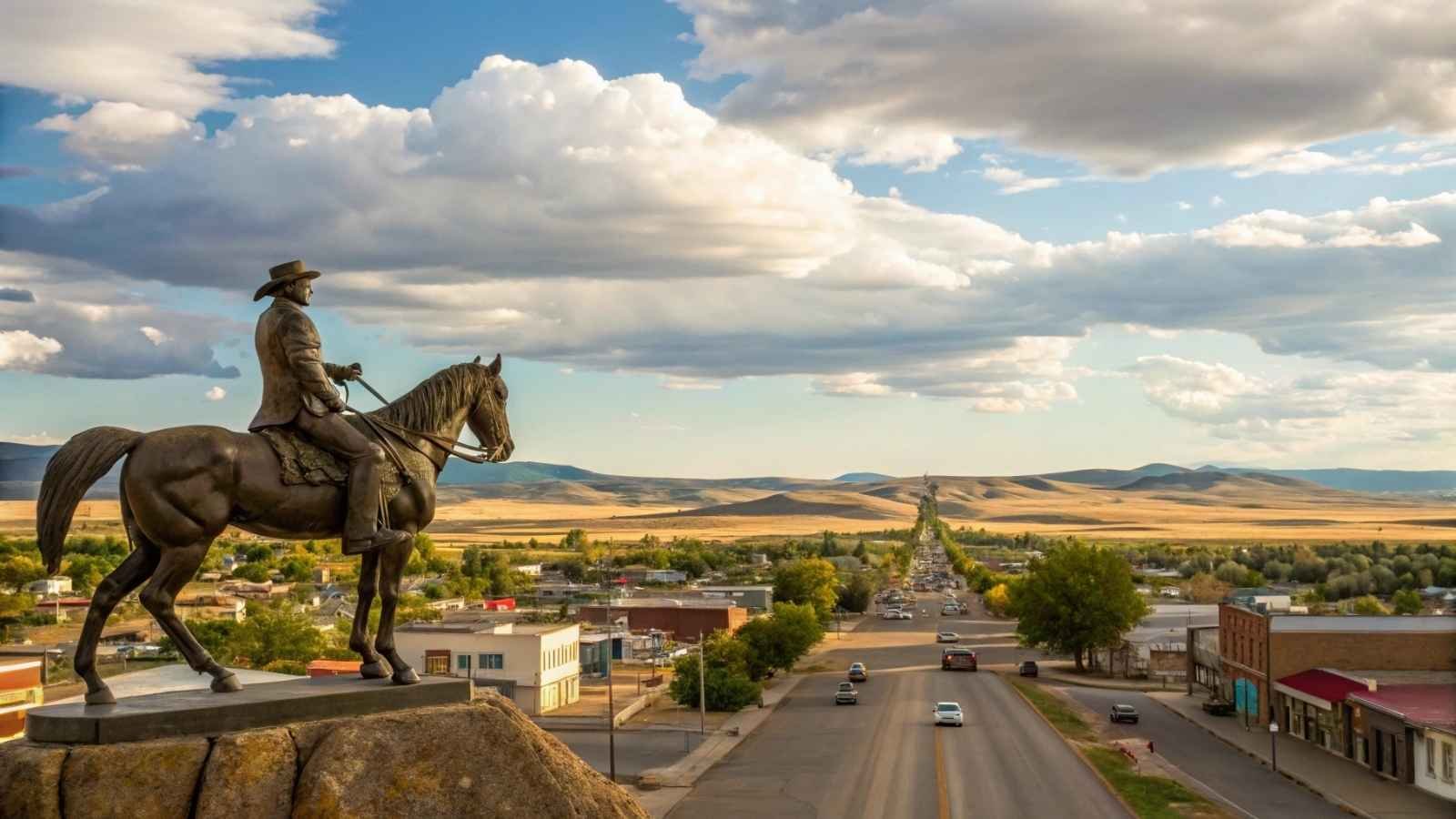
If you want your retirement with a side of rugged independence, Lander fits the bill. It’s surrounded by the Wind River Range, where locals hike, fish, and climb well into their 70s. And while the town is small, it has its hospital and solid access to care, plus a very healthy, active population.
The town’s affordability is a standout. Homes here are still below the national average, and Wyoming’s tax-free retirement perks (no income tax, no tax on retirement income) make Lander a smart move for your nest egg. You won’t find strip malls, but you will find fresh air, craft coffee, and neighbors who help each other shovel snow.
It’s also one of the most walkable small towns in the state, with a historic Main Street full of local shops and community events like Lander Brew Fest and art walks. It feels personal, and that’s what many retirees want.
Quick Facts:
- Best Months to Visit: June–September
- Average Home Price: ~$295,000
- Healthcare Access: SageWest Health Care
- State Taxes: No income tax
- Vibe: Adventurous, tight-knit, low-key, wild, and free
11. Taos, New Mexico
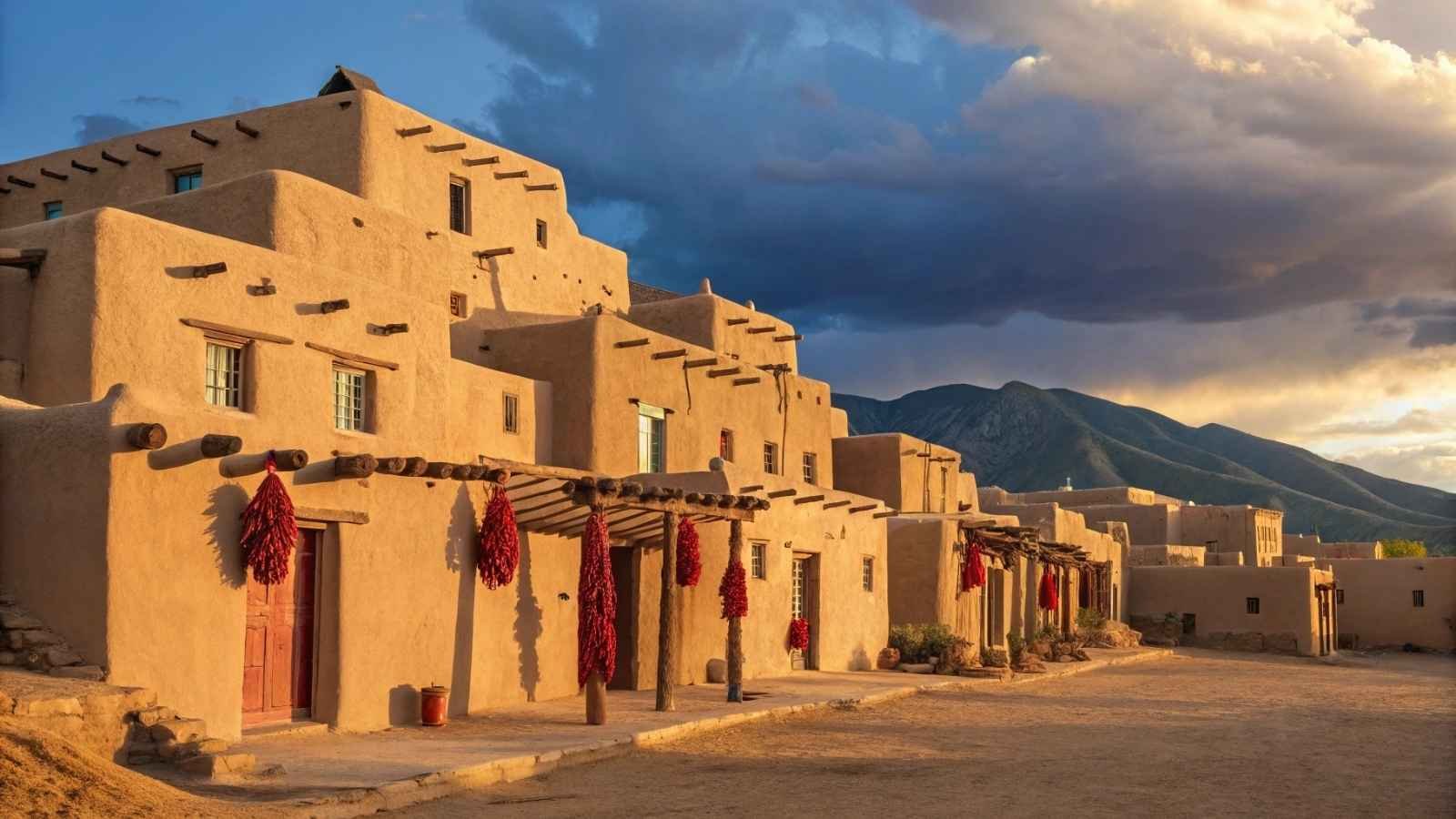
Taos is not your typical mountain town—and that’s exactly the point. This enclave of northern New Mexico, rooted in adobe architecture and high desert backdrop, creative spirit also adds too along with wanderers and lately artist+ retireees. Located at the feet of the Sangre de Cristo Mountains, skiing, hiking, and during the summer soaking in hot springs are just life.
While it’s certainly artsy, Taos is also surprisingly practical. Holy Cross Medical Center provides solid local healthcare, and nearby Santa Fe, just over an hour away, offers even more advanced care at top-rated hospitals. And although Taos has an eclectic reputation, many retirees live quietly in modest adobe homes that are far more affordable than homes in Santa Fe or Boulder.
Add in 300+ days of sunshine, a strong senior community, and jaw-dropping natural beauty, and Taos becomes a kind of soulful retirement outpost—offbeat, yes, but deeply nourishing.
Quick Facts:
- Best Months to Visit: May–June and September–October
- Average Home Price: ~$350,000
- Healthcare Access: Holy Cross Medical Center; advanced care in Santa Fe
- State Taxes: Moderate; partial tax on Social Security
- Vibe: Artsy, laid-back, multicultural with deep historical roots
12. Morgantown, West Virginia

Morgantown is where Appalachian charm meets academic energy. Home to West Virginia University, this lively riverfront town offers a rare combo: low living costs, access to cutting-edge medical care, and a town that doesn’t shut down after 6 p.m. WVU’s teaching hospital, J.W. Ruby Memorial, ranks as one of the best in the region, making it a smart choice for retirees who want both affordability and expert care.
Morgantown is not a college town, and it does have quiet pockets that are nice for retirement, but it has hiking along the Coopers Rock State Forest that is just gorgeous. You also have a student population, so you get a lot of culture with a student-run caleenamic-astrophe and transit and food options.
In short, it’s a place where you can go fly-fishing in the morning and catch a string quartet performance by night—all while keeping your savings intact.
Quick Facts:
- Best Months to Visit: April–June and September–October
- Average Home Price: ~$240,000
- Healthcare Access: J.W. Ruby Memorial Hospital (WVU Medicine)
- State Taxes: Income tax applies; Social Security is partially taxed
- Vibe: College town energy, forested and friendly, culturally active
13. Payson, Arizona
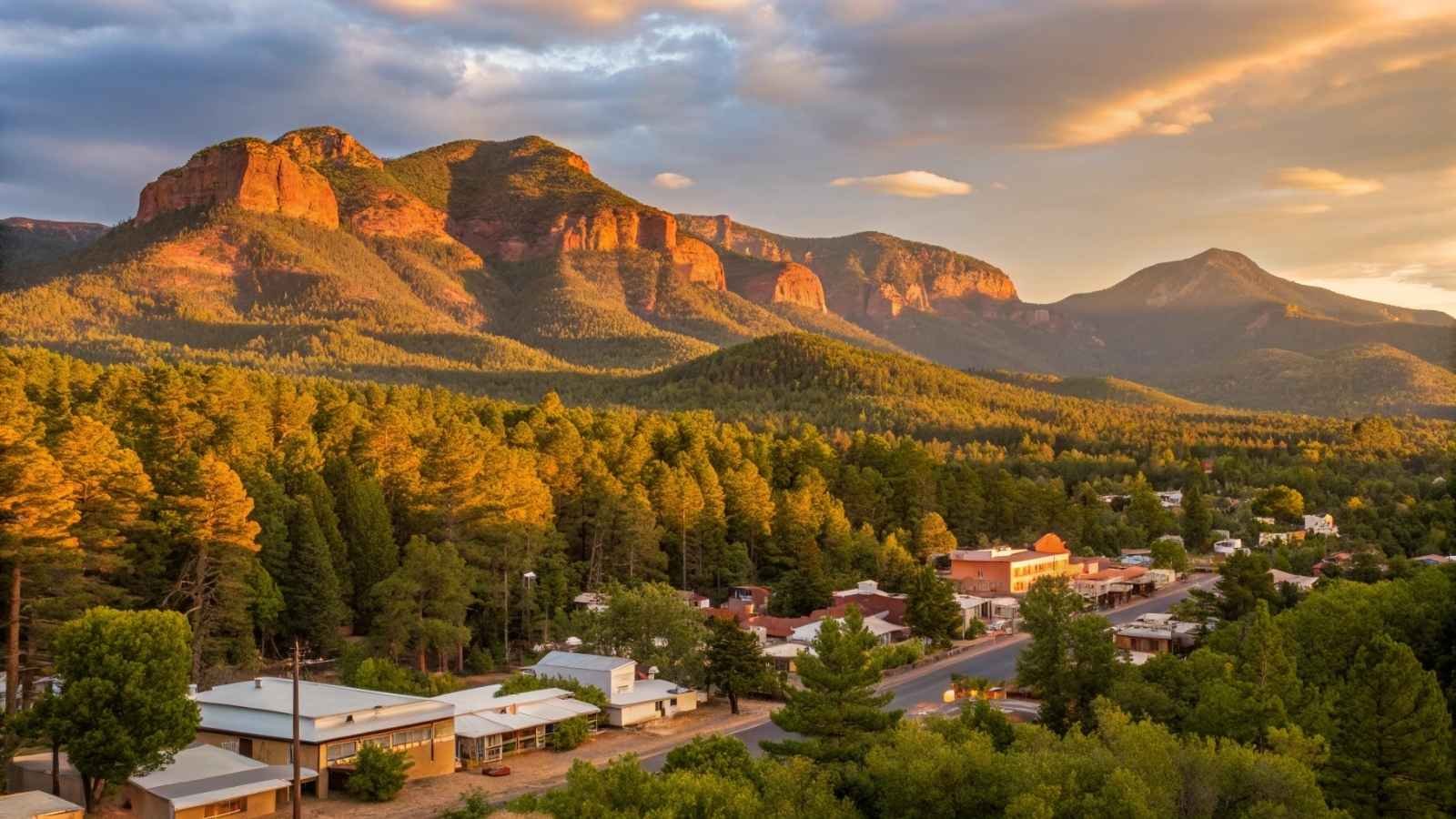
Payson is tucked away in the Mogollon Rim country of Arizona, a welcome reprieve from Phoenix or Tucson heat. At roughly a mile above sea level, nestled in pine forests and scenic plateaus, it offers cooler summers/ winters and panoramic views in every direction. Mountains, but not snowy mountainswhich is what makes it so desirable for year-round retirees.
Payson has a small-town heart but is no slouch in services. Banner Payson Medical Center offers quality local care, and Phoenix, just 90 minutes away, delivers access to some of the best medical centers in the Southwest. What’s more, the town is seeing a quiet boom among retirees seeking mild weather and open space without the price tags of Sedona or Flagstaff.
If you’re into stargazing, nature walks, and a bit of Wild West nostalgia, Payson might just be the mellow mountain home you didn’t know you needed.
Quick Facts:
- Best Months to Visit: April–June and September–November
- Average Home Price: ~$340,000
- Healthcare Access: Banner Payson Medical Center, major hospitals in Phoenix
- State Taxes: Moderate; partial tax on Social Security
- Vibe: Piney, peaceful, just the right kind of quiet
14. Glenwood Springs, Colorado
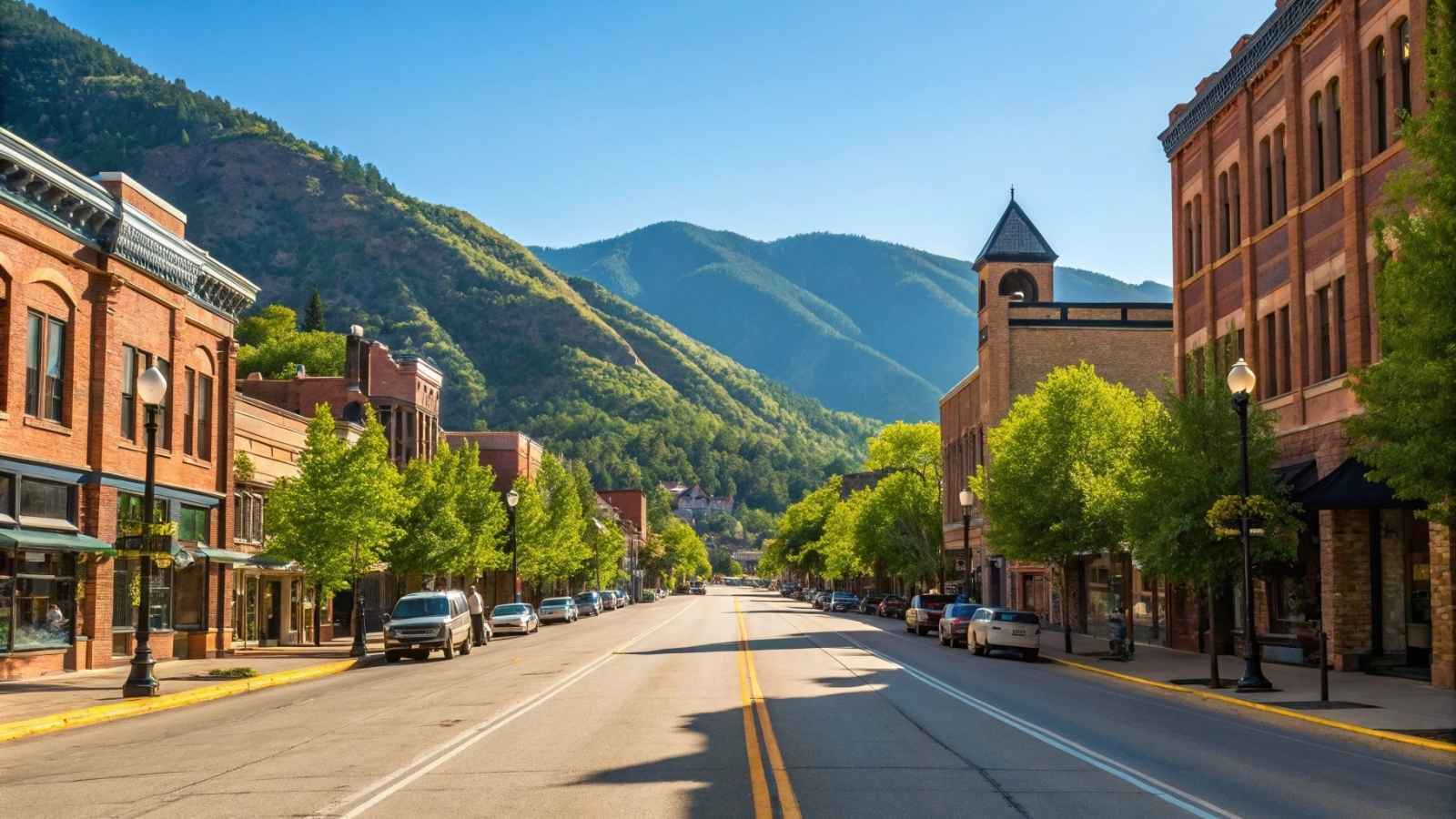
And finally, Glenwood Springs, a town where natural hot springs meet snow-capped peaks, is a retirement dream for those who want their golden years with a bit of sparkle. Located between Aspen and Vail (but without their jaw-dropping price tags), Glenwood has long drawn wellness seekers thanks to its mineral-rich thermal pools and active outdoor culture.
Healthcare is exceptional here. Valley View Hospital consistently ranks among the top small hospitals in the nation. And while the cost of living is higher than in some towns on this list, retirees often find the quality of life more than justifies the price. You’re walking distance from trailheads, farmers’ markets, and the world’s largest hot springs pool, making healthy living as effortless as a soak in 104-degree water.
This is the kind of town where you’ll find 70-year-olds kayaking the Colorado River before brunch. It’s vibrant, clean, and full of life—a beautiful way to round out this list.
Quick Facts:
- Best Months to Visit: May–October
- Average Home Price: ~$545,000
- Healthcare Access: Valley View Hospital
- State Taxes: Moderate; Social Security income is partially exempt
- Vibe: Wellness-forward, mountain-luxe, active, and upbeat






